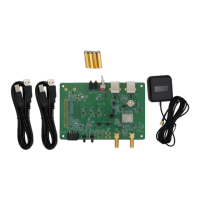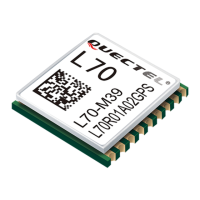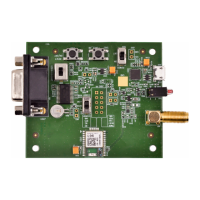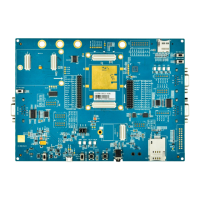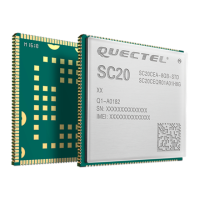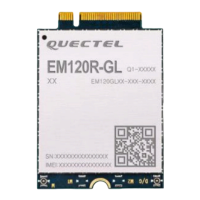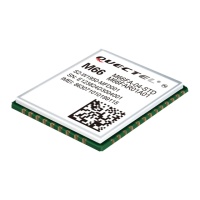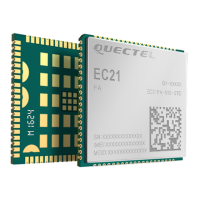GNSS Module Series
LC79D Hardware Design
LC79D_Hardware_Design 9 / 42
2.2. Product Variants
Due to supporting of different working modes, LC79D is classified into two variants:
LC79D (A), supporting standalone mode, has a built-in flash and it boots firmware from the flash, so
it can work independently.
LC79D (B), supporting host mode, does not include a built-in flash, so it cannot work independently
and has to boot firmware from an Android device. Through the Quectel UDR (Untethered Dead
Reckoning) technology working on Android devices, the positioning information provided by the
module and that from a 6-axis sensor will be combined to provide vehicles with continuous and
accurate positioning.
Table 2: Key Differences between LC79D (A) and LC79D (B)
2.2.1. UDR Technology
UDR refers to the capability of a GNSS receiver to continuously navigate on a vehicle when there are
insufficient GNSS satellite signals available. To realize this function, the receiver uses the information
provided by external sensors concerning the state of the vehicle to propagate the navigation solution. With
this combined system, the sensor’s inputs will help smooth the navigation trace when the satellite signals
are partially or completely blocked, while the satellite signals will then provide updates and corrections for
sensor drifts. With UDR technology, the system will get continuous and high accuracy positioning in
environments such as tunnels and urban canyons.
UDR Technology Working on
Android Devices

